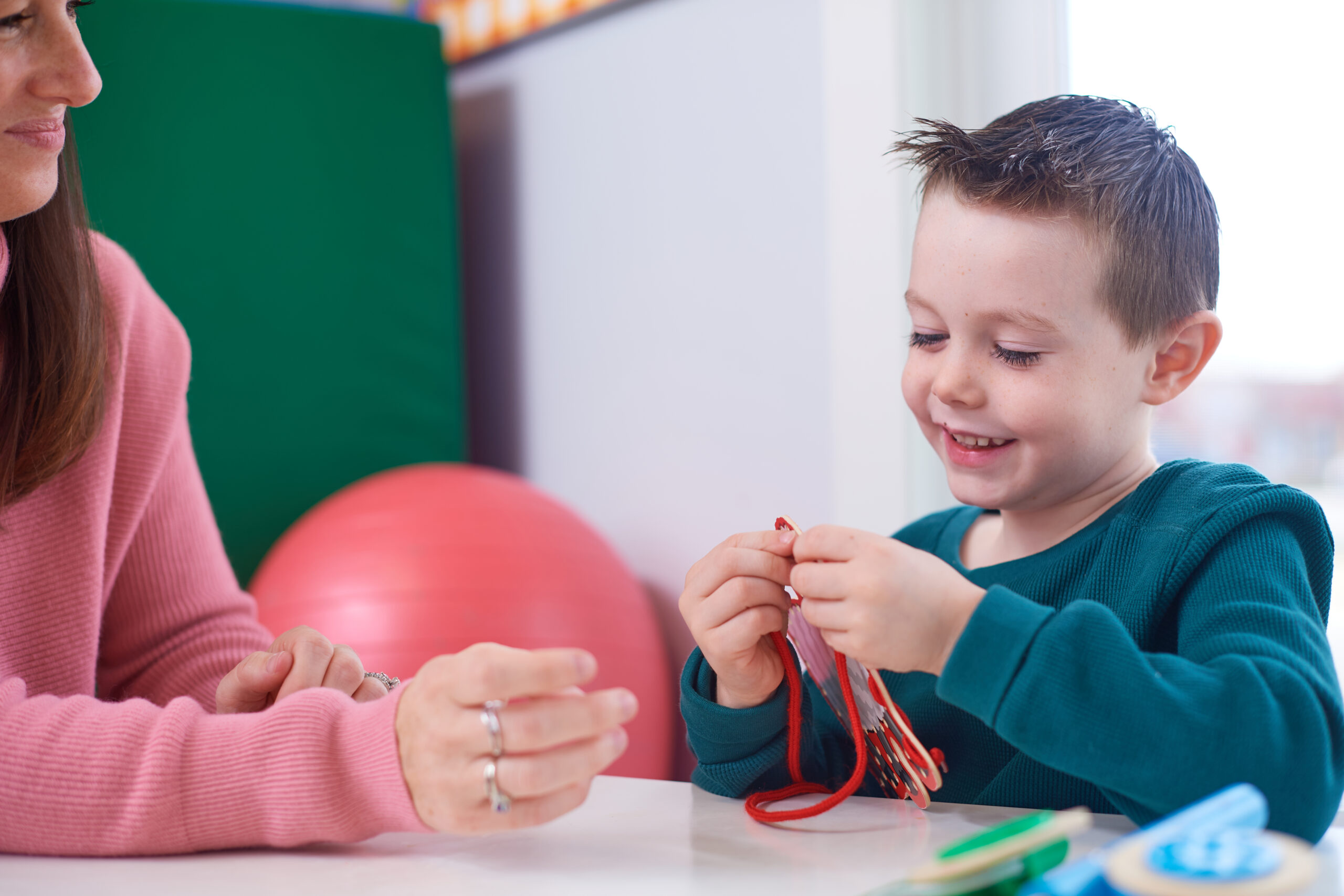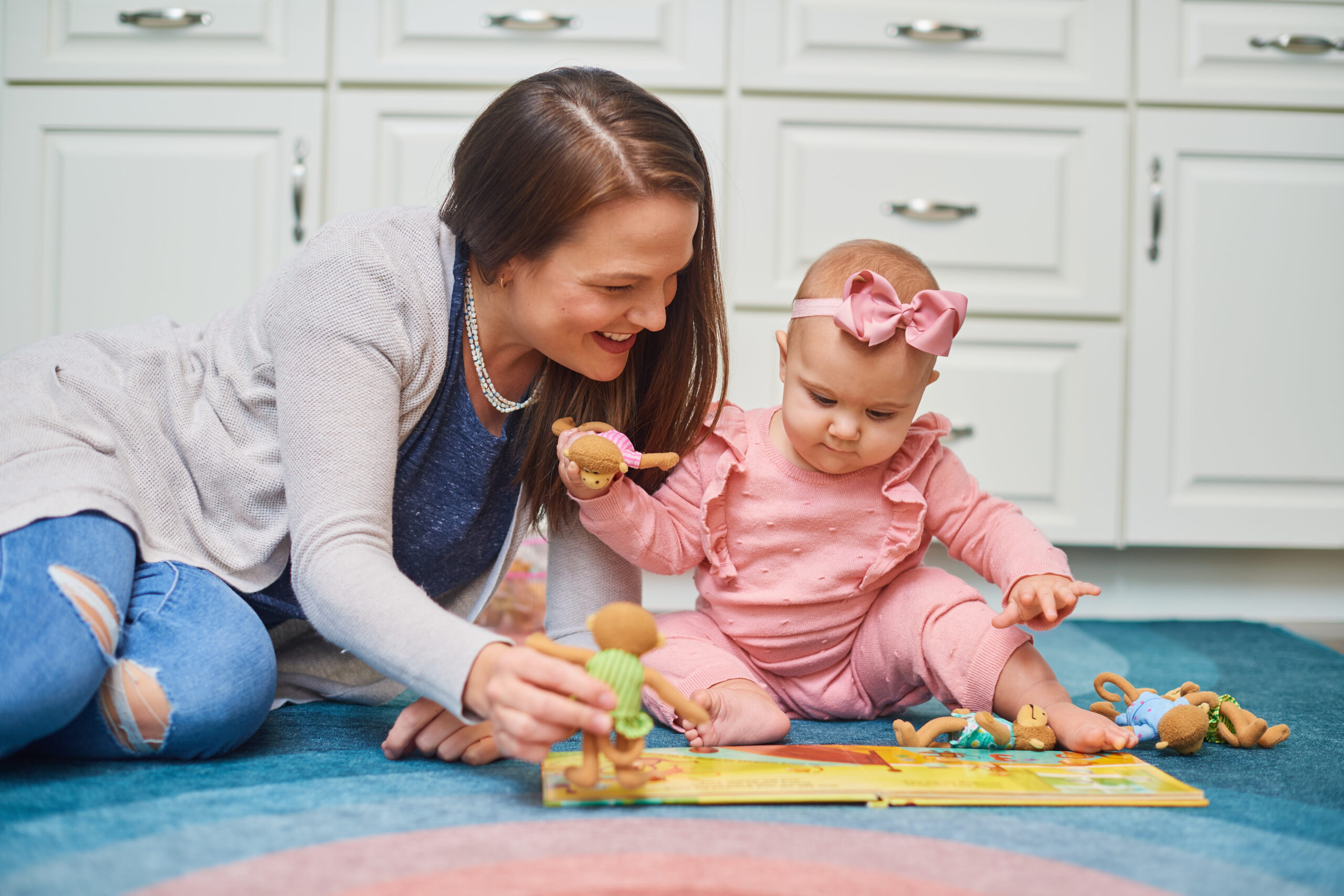Occupational Therapy (OT) Tips for Returning to the Classroom
As exciting and fun as it is to start a fresh, new school year, we all know there can be some stressful moments as well. From an occupational therapist’s standpoint, there are some helpful tips to support this big, exciting transition from free-play summer to structured school days.
Strengthening Hand Muscles
During the school year, kids are constantly using the tiny little muscles in their hands while coloring, writing, counting with small manipulatives, cutting with scissors, and much more. On the flipside, summer typically provides more big-muscle gross motor play, and those tiny hand muscles are used a bit less.Focused play and activities that will activate the small muscles in the hand will improve your child’s ability to maintain or gain a good grasp on their writing utensils, prevent any setbacks with fine motor skills, and even improve these skills as they are getting back into the classroom. To help prepare your child, try these fun activities to strengthen hand muscles.
Maintaining Self-Regulation & Emotional State
Starting a new school year with a new teacher and new friends can be a heavy load to carry for many kids. Much like when adults begin a new job or make a big move, it can feel overwhelming. And there is no doubt, most children have been home from school for longer than they usually would be this past couple of years.In OT, we frequently use what is called the engine program to help identify, understand, and work through our emotional regulation. The engine program contains three possible states: green, red, and yellow. It is ideal to be in the “green,” where we are regulated, calm, and able to learn and interact appropriately. The “red” is when our engine (emotional regulation) is too high. This includes feeling overly excited, angry, and unable to participate due to being in an overwhelmed state of emotions. The “yellow” is when our engine is underwhelmed, including feeling too tired, sick, or sad to participate in our daily activities, including schoolwork and social interactions.
It’s only natural for children to express nerves surrounding the topic of beginning school. To help them with the transition, you can try these tips frequently used in the practice of occupational therapy to help maintain that “green” state of emotional regulation.
Tips to help ease the transition back to school:
1) Have an open and honest discussion and prepare your child for what school will be like. For kids who are anticipating their first day or week of school, it is usually very helpful to show them pictures of the school, the parking lot, and, if possible, the classroom. This way, when they arrive, these scenes will be familiar to them, and that familiarity may help ease the transition. Just like adults, children feel comfort from knowing what to expect. Visual schedules can also be a helpful tool for children. Using pictures and words to show a general layout of their day at school and when they will return home can increase their understanding of what to expect.2) Keep them involved in the preparation! Buying school supplies can seem like just a chore, but it can be an experience that helps get your kids truly excited for the first days and weeks of school. Allow them to pick out some supplies, choose the colors of their folders, and pick out some new shoes and clothes. When the adults show excitement about something, kids will follow!
3) UNWIND! At the end of the school day, kids have absorbed tons of information and, at times, may understandably feel quite overstimulated. They experience auditory stimuli they need to decipher, such as hearing directions from their teacher, noisy classrooms, and loud hallways. There are also visual stimuli at school, such as vibrant and busy decor on the walls of the classes and hallways, seeing and meeting new faces, copying work from the board to their papers, and more.
Due to a new overload of sensory information, kids may melt down by the time they get into their caregiver’s car. It is helpful to reinforce using feeling words to help children understand and describe what and how they are feeling. Of course, having an understanding adult to greet them after these overwhelming first days will also be very beneficial for all their strong feelings!
4) Help your child create their own engine program speedometer as a useful visual aid for expressing and understanding their emotional regulation. You can keep it on the fridge or an area that your child can easily access to identify their emotional regulation before and after school. Magnets can be moved as a tactile and visual aid for identification of the child’s regulatory state. On the Alert Program® website, you can download an Engine Speedometer for a small fee—only 99¢ as of October 2022—and it comes with two pages of tips and instructions.
Ensuring Backpack Safety
We can’t forget about book bags! Many times, our kids need to bring lots of books and supplies to and from school. It is incredibly important to pay attention to the weight of the bag, your child’s posture when carrying the bag, and the biomechanics of putting the bag on and taking it offincluding picking it up from the ground. To find out more on backpack safety and the warning signs of when your child’s backpack use needs to be adjusted, download this pdf on the basics of backpack wearing from the American Occupational Therapy Association.You’ve Both Got This!
We hope these tips help ease you and your child into the back-to-school mindset. Remember, all children are prone to experience some stressful moments during this time, but keeping open communication and following the tips outlined above can go a long way in preparing them—and youfor the school year ahead.From everyone on our team, we wish you and your family a happy and safe back-to-school!



